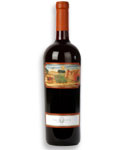 |
|
Wine Details
Price:
$24.00 per bottle
Description:
Nebbiolo is a grape native to foggy Piemonte in Northern Italy. It is right at home in our Sonoma Mountain vineyard where it receives ample morning sun and afternoon shade. We blended in Primitivo (12.5%), Teroldego (2.3%) and Sangiovese (.2%) to round out this distinctive wine. A dry red with good acidity, our 2001 “La Nebbia” offers earthy flavors of tobacco and leather along with subtle notes of dried cherry and smoky oak.
|
|
|